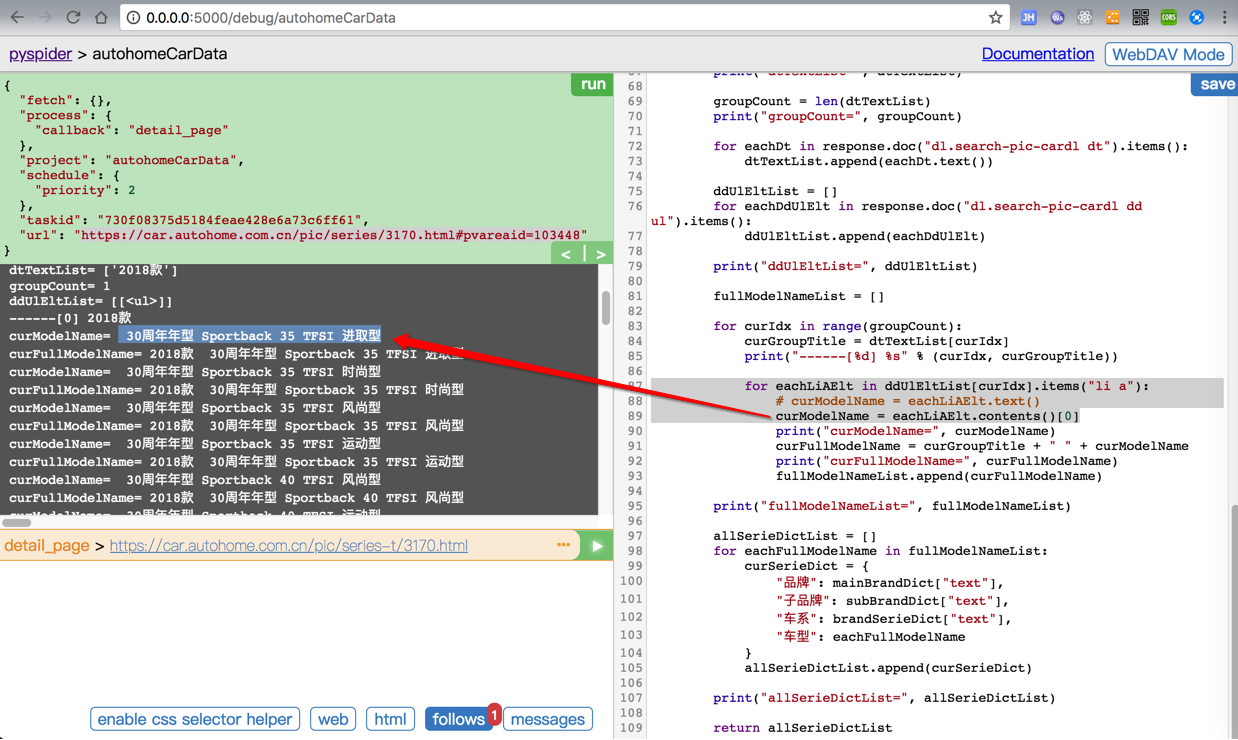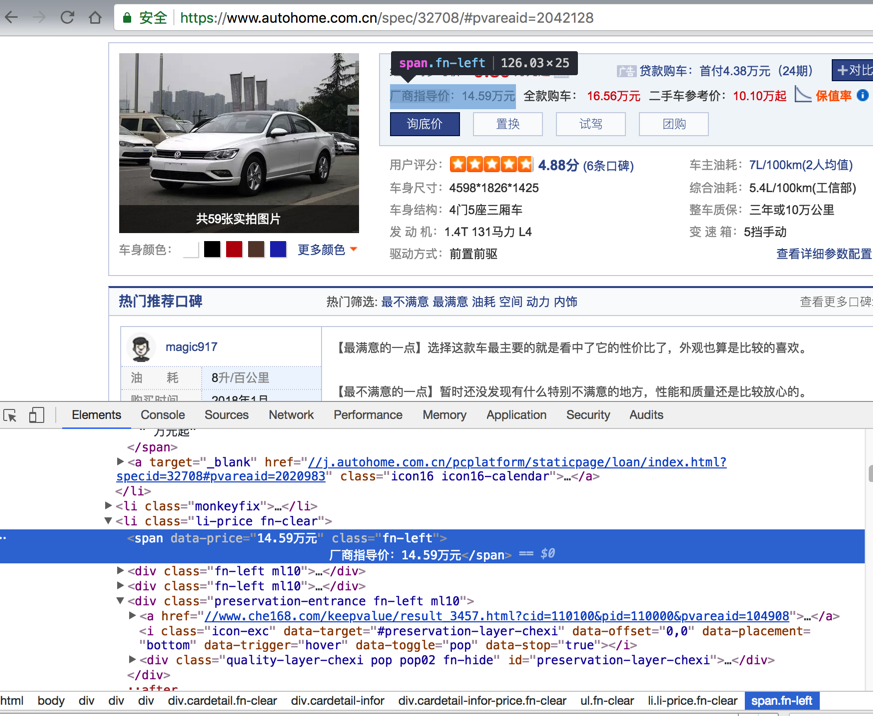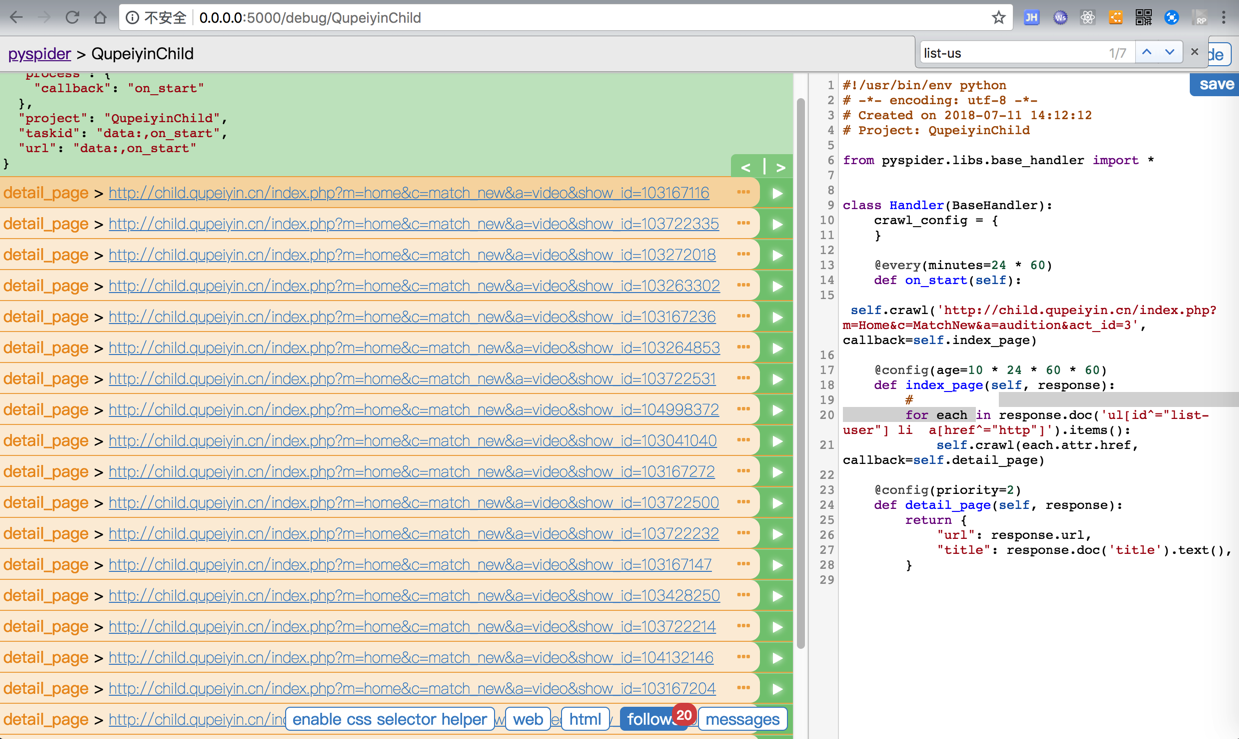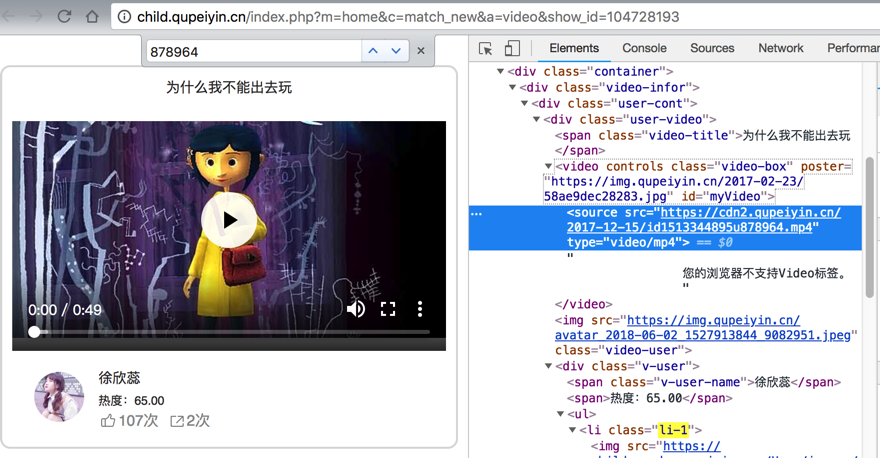PyQuery常见操作
获取元素的文本值
举例:html
<p class="contributors">
By
<a href="/teachers/authors/judy-love.html" target="_self"><strong> Judy Love</strong></a>
,
<a href="/teachers/authors/julie-danneberg.html" target="_self"><strong> Julie Danneberg</strong></a>
</p>
写法:
curHtmlElement.text()
举例:
authors = []
for eachAuthor in response.doc('p[class="contributors"] a[href] strong').items():
print("eachAuthor=%s", eachAuthor)
authorText = eachAuthor.text()
详见官网文档:
https://pythonhosted.org/pyquery/api.html#pyquery.pyquery.PyQuery.text
获取含有子元素的a的本身的text
页面:

html
<a href="/pic/series-s32040/3170.html#pvareaid=2042220" class=""> 30周年年型 Sportback 35 TFSI 进取型
<span class="font-grey999">(131张)</span>
<i class="icon16 icon16-rainbow"></i>
</a>
想要:获取a的本身的text
代码:
for eachLiAElt in ddUlEltList[curIdx].items("li a"):
curModelName = eachLiAElt.contents()[0]
输出值:30周年年型 Sportback 35 TFSI 进取型
效果:

- 官网文档
- pyquery.pyquery.PyQuery.contents
Return contents (with text nodes)
- 和之前用过的
BeautifulSoup的contents是类似的- BeautifulSoup contents
tag的 .contents 属性可以将tag的子节点以列表的方式输出
- BeautifulSoup contents
- pyquery.pyquery.PyQuery.contents
直接用text()会包含子元素的text值
如果直接用text():
for eachLiAElt in ddUlEltList[curIdx].items("li a"):
curModelName = eachLiAElt.text()
是错误的写法。
因为会把span中的text,此处的(131张)也包括在内
获取元素的属性的值
语法:
attrhtmlElement.attr("property name")- 如果
property name是连接在一起的单词这种,比如xxx,xxx_yyy,那么可以写成:htmlElement.attr.property_name
举例1
<div class="caption">
<select id="book-detail-reading-level">
<option value="GRL" data-reading-level="J">
GUIDED READING</option>
<option value="LEX" data-reading-level="240L">
LEXILE® MEASURE</option>
<option value="GLE">
Grade Level Equivalent</option>
<option value="DRA" data-reading-level="16">
DRA LEVEL</option>
</select>
</div>

对应代码:
readingLevelSelectElement = readingLevelElement.find('select[id="book-detail-reading-level"]')
print("readingLevelSelectElement=%s" % readingLevelSelectElement)
guidedReading = readingLevelSelectElement.find('option[value="GRL"]').attr("data-reading-level")
lexileMeasure = readingLevelSelectElement.find('option[value="LEX"]').attr("data-reading-level")
gradeLevelEquivalent = readingLevelSelectElement.find('option[value="GLE"]').attr("data-reading-level")
draLevel = readingLevelSelectElement.find('option[value="DRA"]').attr("data-reading-level")
print("guidedReading=%s" % guidedReading)
print("lexileMeasure=%s" % lexileMeasure)
print("gradeLevelEquivalent=%s" % gradeLevelEquivalent)
print("draLevel=%s" % draLevel)
即可提取到内容:
readingLevelSelectElement=<select id="book-detail-reading-level">
<option value="GRL" data-reading-level="J">
GUIDED READING</option>
<option value="LEX" data-reading-level="240L">
LEXILE® MEASURE</option>
<option value="GLE">
Grade Level Equivalent</option>
<option value="DRA" data-reading-level="16">
DRA LEVEL</option>
</select>
guidedReading=J
lexileMeasure=240L
gradeLevelEquivalent=None
draLevel=16
举例2
页面:

html:
<span data-price="14.59万元" class="fn-left">
厂商指导价:14.59万元</span>
想要:获取span的data-price的属性的值
- 正确写法
msrpPriceStr = msrpPriceElt.attr("data-price") - 错误写法:
msrpPriceStr = msrpPriceElt.attr.data-price
不是用PyQuery.val去获取元素属性值
注意此处不是
pyquery – PyQuery complete API — pyquery 1.2.4 documentation
中的:
PyQuery.val(value=<NoDefault>)
去获取属性的值的
CSS选择器的写法
attribute = value类的元素定位
例子1
调试看到的 html代码是:
<ul class="list-user list-user-1" id="list-user-1">
<li>
<a href="/index.php?m=home&c=match_new&a=video&show_id=103167116">
PySpider内部会自动加上当前host,即http前缀的http://xxx,实际上是:
<ul class="list-user list-user-1" id="list-user-1">
<li>
<a href="http:://xxx/index.php?m=home&c=match_new&a=video&show_id=103167116">
(PySpider中的)PyQuery的写法:
response.doc('ul[id^="list-user"] a[href^="http"]')
或:
response.doc('ul[id^="list-user"] li a[href^="http"]')

(PySpider中的)效果:可以找到元素

例子2
页面:

<video controls="" class="video-box" poster="https://img.qupeiyin.cn/2017-02-23/58ae9dec28283.jpg" id="myVideo">
<source src="https://cdn2.qupeiyin.cn/2017-12-15/id1513344895u878964.mp4" type="video/mp4"> 您的浏览器不支持Video标签。
</video>
想要:获取src值
代码:
# videoUrl = response.doc('video source[src$=".mp4"]')
videoUrl = response.doc('video source[src^="http"]').attr("src")
nth-child类的元素定位
页面:

<div class="v-user">
<span class="v-user-name">徐欣蕊</span>
<span>热度:65.00</span>
想要定位:div下面第二个span
css选择器的写法:
div[class="v-user"] span:nth-child(2)